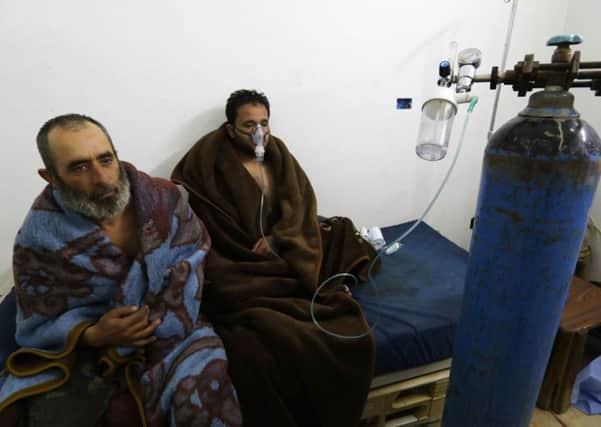Watchdog confirms chlorine gas used in attack on Syrian town


The Organisation for the Prohibition of Chemical Weapons released details in its latest report on poison gas being unleashed in Syria’s civil war. However, the OPCW is not mandated to apportion blame for the attack.
The organisation said its fact-finding mission investigating alleged use of chemical weapons in Syria “determined that chlorine was released from cylinders by mechanical impact in the Al Talil neighbourhood of Saraqib”.
Advertisement
Hide AdAdvertisement
Hide AdThe mission is also investigating allegations that poison gas was used in Douma, near the capital Damascus, in a deadly 7 April attack. It has not yet issued a report on that incident.
On 4 February, the White Helmets search and rescue group and a medical charity reported that several people suffered breathing difficulties after a suspected chlorine gas attack on Saraqeb, days after the Trump administration accused Syrian president Bashar al-Assad’s government of producing and using “new kinds of weapons” to deliver poisonous gases.
Damascus denied the White House’s charges.
The White Helmets said three of its rescuers and six other people suffered breathing problems. The Syrian American Medical Society said its hospitals in Idlib treated 11 patients for suspected chlorine gas poisoning.
OPCW director-general Ahmet Uzumcu harshly criticised the chemical attack, saying: “I strongly condemn the continued use of toxic chemicals as weapons by anyone, for any reason, and in any circumstances.
“Such acts contradict the unequivocal prohibition against chemical weapons enshrined in the Chemical Weapons Convention.”
The OPCW said its team based its findings on evidence including “the presence of two cylinders, which were determined as previously containing chlorine; witness testimony; environmental samples that demonstrated the unusual presence of chlorine in the local environment; and the number of patients at medical facilities shortly after the incident who showed signs and symptoms consistent with exposure to chlorine and other toxic chemicals”.
Saraqeb is in the northern Idlib province, a stronghold for rebels and opposition to Mr Assad’s government. The province is also home to militants linked to al-Qaeda.
The town has come under suspected chemical attacks at least twice before, in 2016 and in 2013.
Advertisement
Hide AdAdvertisement
Hide AdAn attack on Douma last month led to the US, France and Britain blaming the Syrian government and launching joint punitive air strikes targeting suspected Syrian chemical weapons facilities on 15 April. The organisation has not yet issued a report on that attack.
Mr Assad’s forces have repeatedly been accused of using chemical weapons in the long-running civil war. His regime denies the allegations.
Rebels have also been accused of using poison gas.
Meanwhile, two people were killed and 19 others injured when a shell fell in the heart of the Syrian capital, Syrian state TV reported yesterday, stating it was fired by “terrorist groups”.
Damascus police said the shell – which landed near Victoria bridge in central Damascus – also caused damage.
Even though government troops have nearly gained full control of areas surrounding the capital from rebel forces, they are still battling remnants of Islamic State militants south of Damascus.
For years, the capital has seen repeated shelling from Damascus suburbs.